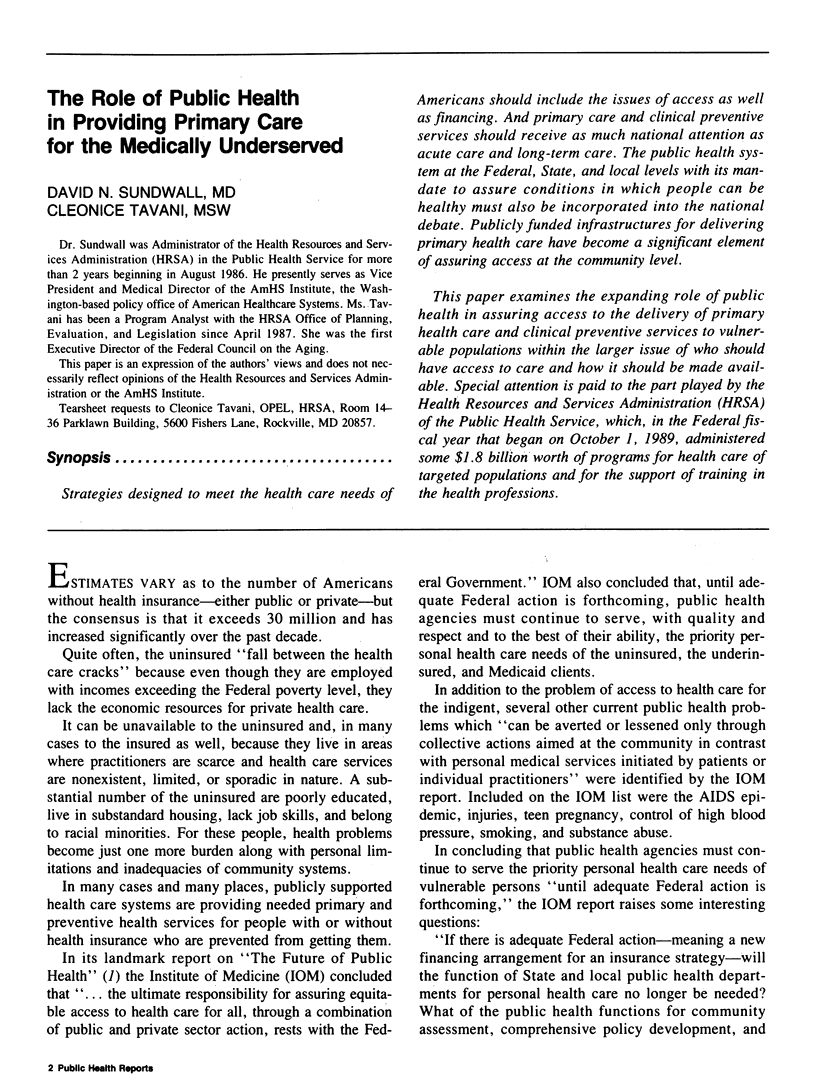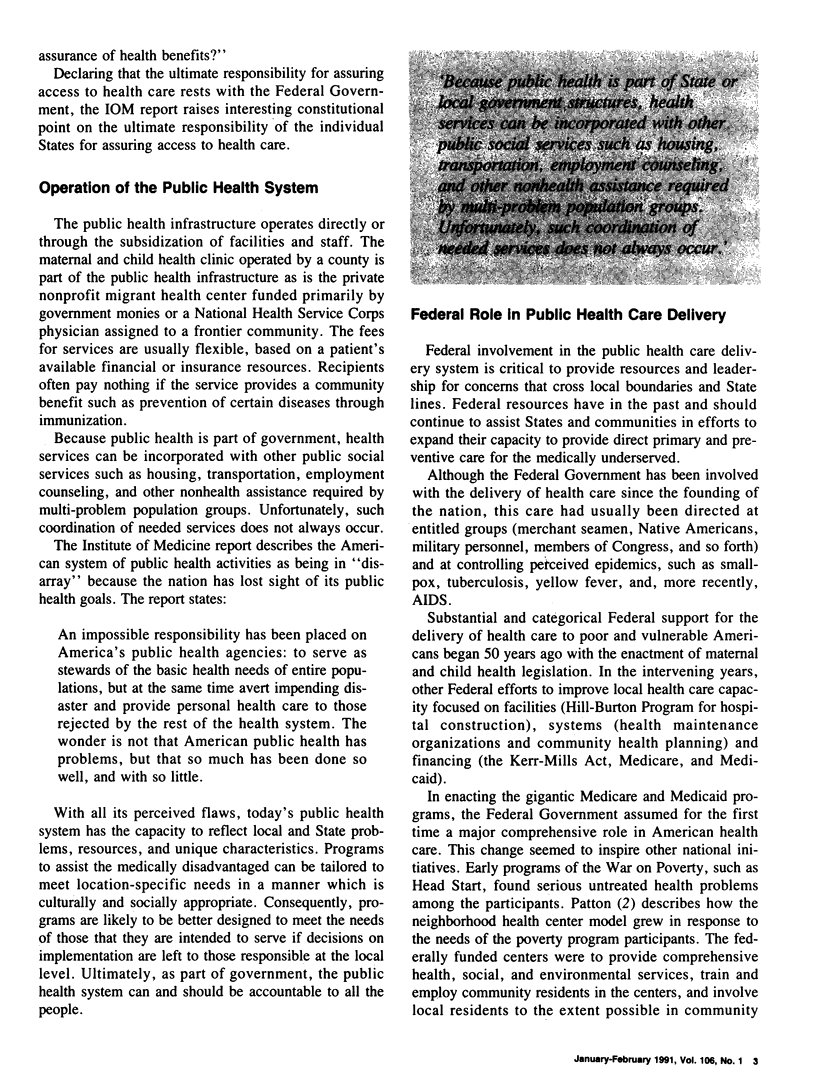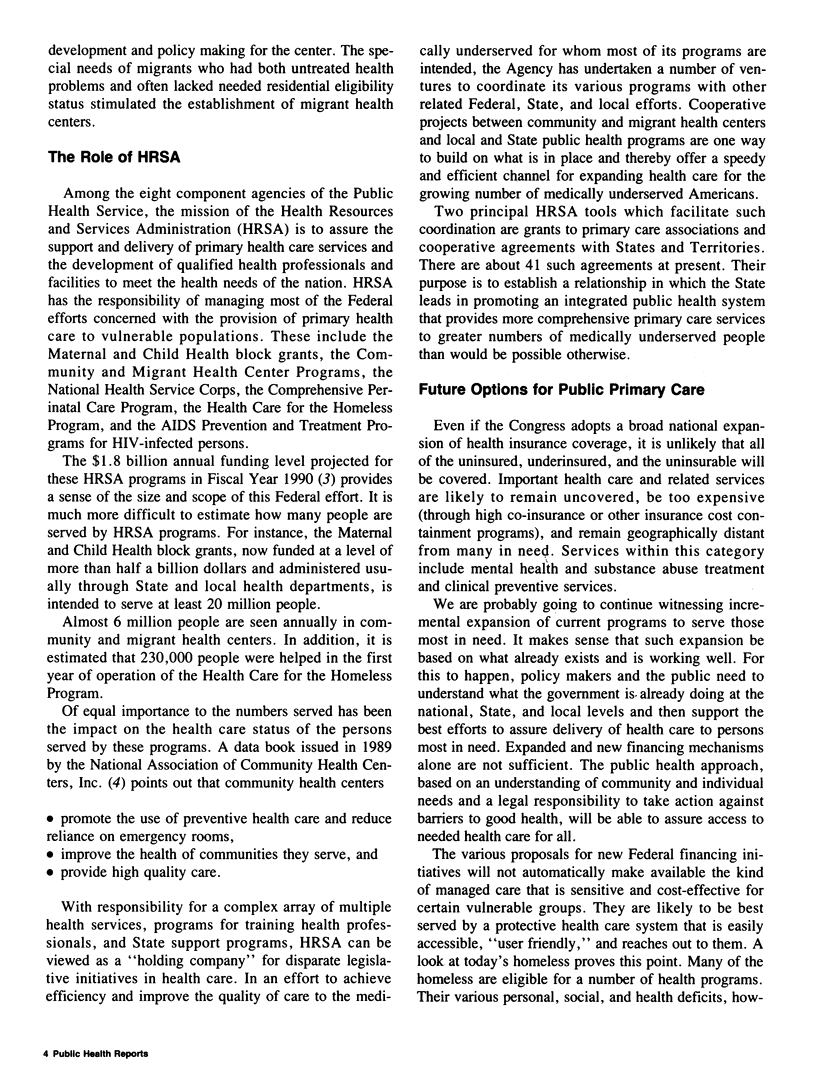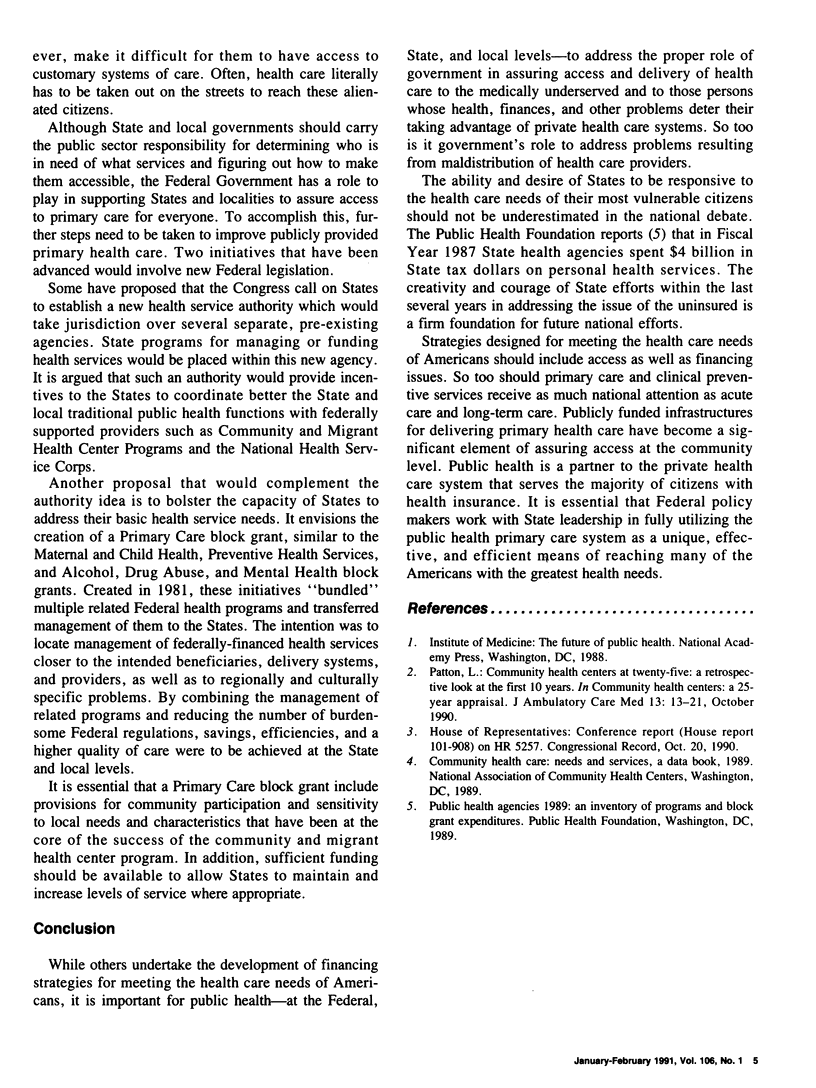Abstract
Strategies designed to meet the health care needs of Americans should include the issues of access as well as financing. And primary care and clinical preventive services should receive as much national attention as acute care and long-term care. The public health system at the Federal, State, and local levels with its mandate to assure conditions in which people can be healthy must also be incorporated into the national debate. Publicly funded infrastructures for delivering primary health care have become a significant element of assuring access at the community level. This paper examines the expanding role of public health in assuring access to the delivery of primary health care and clinical preventive services to vulnerable populations within the larger issue of who should have access to care and how it should be made available. Special attention is paid to the part played by the Health Resources and Services Administration (HRSA) of the Public Health Service, which, in the Federal fiscal year that began on October 1, 1989, administered some $1.8 billion worth of programs for health care of targeted populations and for the support of training in the health professions.
Full text
PDF





